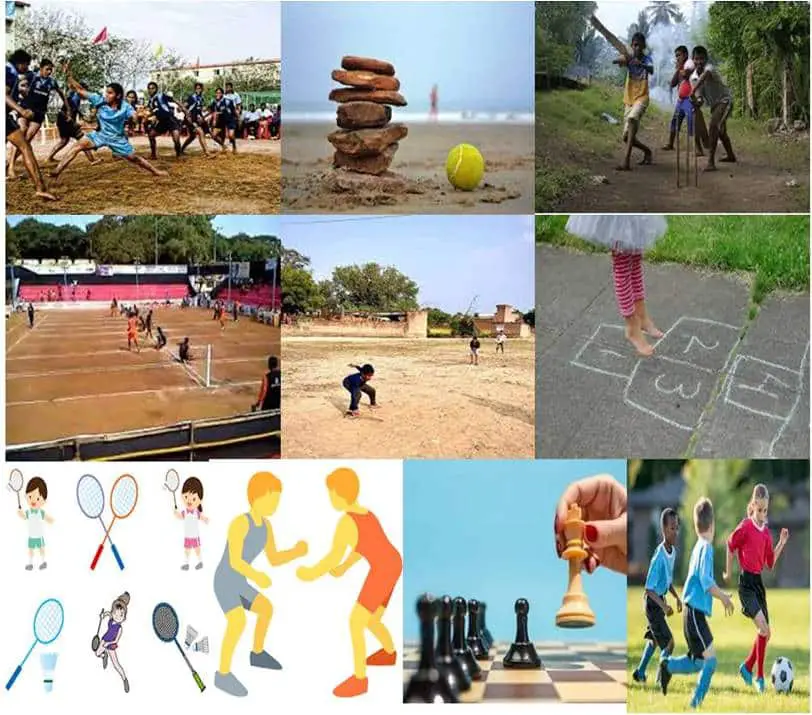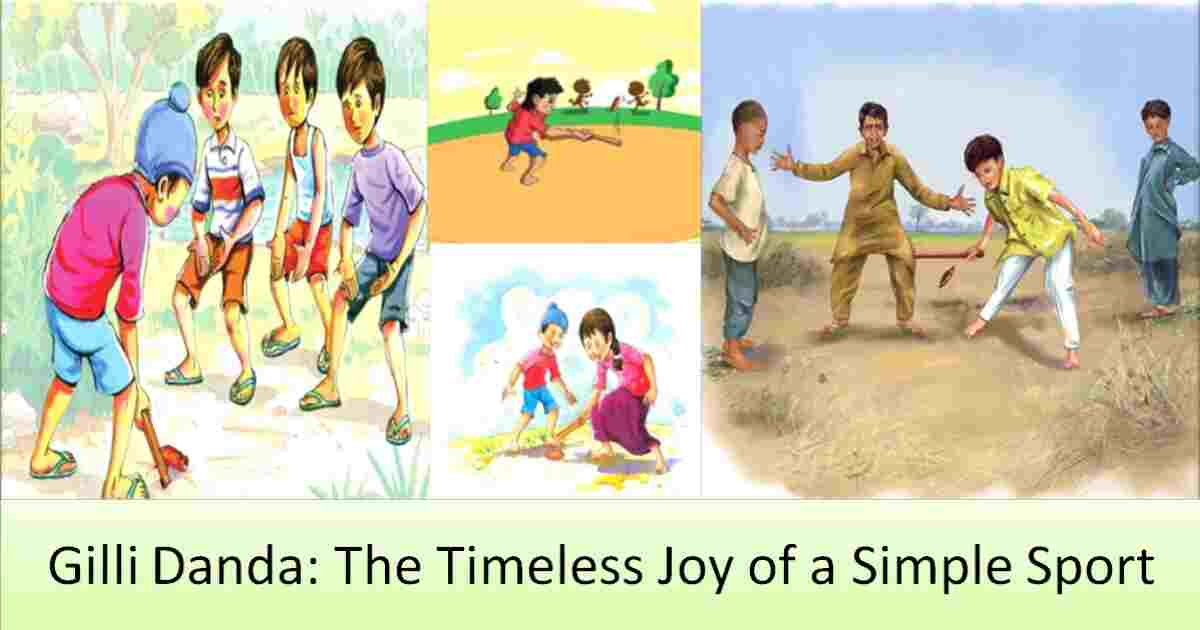Sports for Kids: Traditional sports have a particular position in Indian society because they teach kids important life lessons in addition to providing amusement. The top 10 traditional children’s sports in India are covered in this article along with the reasons why they are so important to children’s physical and mental growth.
For millennia, traditional sports have been an essential component of Indian culture. They provide youngsters with not just enjoyment but also great opportunities for character development, mental flexibility, and physical conditioning. As parents become more aware of these sports’ multiple advantages, interest in them has recently increased. Let’s explore the realm of traditional sports and learn about the top 10 games that every Indian child ought to play.
Top 10 sports for kids in India
Following are the most popular traditional sports for kids in India
1. Kabaddi: A High-Energy Game
The contact sport of Kabaddi calls on quickness, strength, and agility. Kids can play this game to stay active and increase their stamina. The game encourages cooperation among players and imparts to kids valuable lessons in planning ahead and making snap judgements.
Kabaddi is a contact team sport played by two teams of seven players. The objective of the game is for a single player from the attacking team, known as the “raider”, to cross into the opponent’s half of the court, tag as many of their defenders as possible, and return to their own half without being tackled. The defenders try to prevent the raider from returning to their own half of the court by tackling them. Kabaddi is a high-energy game that requires a combination of speed, strength, agility, and endurance. Players must also be able to think strategically and work together as a team.
The game is played on a rectangular court with two half-courts. The attacking team starts in one half-court, and the defending team starts in the other. The raider enters the opponent’s half-court and must hold their breath while they are on the opponent’s side of the court. If they take a breath, they are out of the game. The raider tries to tag as many of the defenders as possible before returning to their own half of the court. The defenders try to prevent the raider from returning to their own half of the court by tackling them. If the raider is tackled, they are out of the game.
The team with the most points at the end of the game wins. Points are awarded for each defender that is tagged by the raider. Kabaddi is a popular sport in many countries, including India, Pakistan, Bangladesh, Sri Lanka, and Iran. It is also gaining popularity in other parts of the world, such as Australia and the United States. Kabaddi is a great sport for people of all ages and fitness levels. It is a fun and challenging way to get exercise and stay active.
Why kabaddi is such a high-energy game:
- The pace of the game is very fast. Players are constantly moving and trying to score points.
- The game is very physical. Players are constantly colliding with each other and trying to tackle each other.
- The game requires a lot of endurance. Players must be able to run and jump for long periods of time.
- The game is very strategic. Players must think quickly and make decisions on the fly.
2. Cricket:
In India, cricket requires no introduction. The nation is united by a passion, not simply a sport. Children can learn discipline, patience, and the value of collaboration while playing cricket in addition to simply loving the sport.
3. Kho-Kho
A child can improve their speed, reflexes, and general fitness by playing the tag game kho kho. It’s an excellent method to keep kids moving and instill in them the value of teamwork and cooperation. For playing of kho-kho, you will need a large, open space and two teams of nine players each. The playing field is divided into two halves, with a central lane running through the middle. At each end of the central lane is a pole.
One team is the chasing team, and the other team is the defending team. The chasing team takes the field first, with eight players sitting in the central lane and one player standing at one of the poles. The defending team then sends in three players to run around the field and avoid being tagged by the chaser. The chaser can only run in one direction at a time, and they can only tag defenders on their side of the field. If a defender is tagged, they are out of the game. The chaser can also switch places with one of their teammates by touching them on the back and shouting “kho!”
The defending team tries to stay on the field for as long as possible. If all three defenders are tagged out, the chasing team gets a point. The defending team then gets a chance to be the chasing team, and the game continues. The team with the most points at the end of the game wins. Kho-kho is a fun and challenging sport that can be enjoyed by people of all ages and fitness levels. It is a great way to get exercise, improve your teamwork skills, and have fun.
Tips for playing kho-kho:
- Be quick and agile. You will need to be able to run fast and change direction quickly to avoid being tagged or to tag defenders.
- Work together as a team. Communicate with your teammates and help each other to chase down defenders or avoid being tagged.
- Be strategic. Think about how you can use your speed and agility to your advantage. Also, think about how you can use your teammates to help you catch defenders or avoid being tagged.
4. Gilli Danda:
Gilli Danda is a straightforward but very entertaining game that has been enjoyed for ages. It aids in the growth of children’s superb hand-eye coordination, focus, and balance. It’s a game that requires very little gear to play. For playing Gilli Danda, you will need two sticks: a short, thick stick called a gilli and a long, thin stick called a danda.
The game is played by two teams, with each player taking turns batting. The batter balances the gilli on the ground and uses the danda to hit it into the air. The batter then tries to hit the gilli as far as possible before it lands. The other team tries to catch the gilli in the air. If they are successful, the batter is out. If the gilli lands on the ground, the batter scores one point for every length of the danda that the gilli is away from the batting spot. The batter continues to bat until they are out. Once a batter is out, the next player in line takes their turn. The team with the most points at the end of the game wins. Gilli Danda is a fun and challenging game that can be enjoyed by people of all ages. It is a great way to get exercise and have fun with friends and family.
Some additional rules and tips for playing Gilli Danda:
- The batter must hit the gilli with the danda. If they use their hands or any other part of their body, they are out.
- The batter must hit the gilli into the air. If they hit it on the ground, they are out.
- The other team can catch the gilli anywhere on the field. If they catch it in the air, the batter is out.
- If the gilli lands on the ground, the batter scores one point for every length of the danda that the gilli is away from the batting spot.
- The batter continues to bat until they are out.
- The team with the most points at the end of the game wins.
5. Hopscotch: A Games and Exercise Combination
Children love playing the game of hopscotch because it makes them move while having fun. It enhances a child’s coordination, balance, and capacity for rule compliance. Additionally, it’s a great way to get kids outside and moving. To play hopscotch, you will need a flat surface, such as a sidewalk or driveway, and a small object, such as a rock or beanbag.
- Draw a hopscotch grid on the ground with chalk. The grid can be any size you want, but it is typically about 10 squares wide and 5 squares tall. The squares should be large enough to fit both of your feet.
- Number the squares from 1 to 10, with 1 being the first square and 10 being the last square.
- To start the game, stand in front of the first square and toss your object into the square. If the object lands inside the square without touching the lines, you can start hopping.
- Hop through the squares, skipping the square with your object in it. You must hop on one foot at a time, and you cannot touch the lines.
- When you reach the last square, turn around and hop back to the beginning, still hopping on one foot and skipping the square with your object in it.
- If you step on a line or touch your object with your other foot, you lose your turn.
- The next player takes their turn. The first player to complete the hopscotch grid without losing wins the game.
Some additional tips for playing hopscotch:
- If you have trouble hopping on one foot, you can use your arms to help you balance.
- If you are playing with a group of people, you can take turns hopping through the hopscotch grid.
- You can also make the game more challenging by adding obstacles to the hopscotch grid, such as cones or hula hoops.
Hopscotch is a fun and easy game that can be enjoyed by people of all ages. It is a great way to get exercise and have fun with friends and family.
6. Badminton:
Badminton is a popular individual sport in India, and it is a great way for kids to improve their hand-eye coordination and agility. To play badminton, you will need a badminton racket, a shuttlecock, and a badminton court. The badminton court is divided into two halves by a net. The players stand on opposite sides of the net and try to hit the shuttlecock over the net and into their opponent’s court.
The game is played to 21 points, and the first player to reach 21 points with a two-point lead wins the game. If the score is tied at 20-20, then the game is played to 30 points, with the first player to reach 30 points with a two-point lead winning the game. Badminton is a fun and challenging sport that can be enjoyed by people of all ages and skill levels. It is a great way to get exercise and have fun with friends and family.
Basic rules of Badminton:
- Players must hit the shuttlecock underhand.
- Players must hit the shuttlecock over the net and into their opponent’s court.
- Players cannot touch the net with their body or their racket.
- Players cannot hit the shuttlecock twice in a row.
- Players cannot hit the shuttlecock out of bounds.
- If the shuttlecock lands on the ground, the player who hit it last loses the point.
Tips for playing Badminton:
- Use a grip that is comfortable for you.
- Keep your racket head up when you hit the shuttlecock.
- Follow through with your swing.
- Move your feet quickly to get into position to hit the shuttlecock.
- Be patient and wait for your opponent to make a mistake.
Some additional tips for beginners:
- Start by practicing your basic strokes, such as the forehand and backhand.
- Once you have mastered the basic strokes, you can start practicing more advanced strokes, such as the smash and the drop shot.
- Try to play with people who are better than you so that you can learn from them.
- Watch professional badminton matches to learn new strategies and techniques.
7. Wrestling:
Wrestling is one of the oldest sports in the world, and it has been a part of the Olympic Games since 1896. Wrestling is also popular in many other international competitions, such as the World Wrestling Championships and the Commonwealth Games. Wrestling is a physically demanding sport that requires a high level of strength, endurance, agility, and balance. It is also a mental sport, as wrestlers must be able to think strategically and adapt their game plan to their opponent.
There are two main types of wrestling: freestyle wrestling and Greco-Roman wrestling. Freestyle wrestling is the most popular type of wrestling, and it allows wrestlers to use their legs to attack and defend. Greco-Roman wrestling is a more technical type of wrestling, and it does not allow wrestlers to use their legs to attack or defend. Wrestling is a great sport for people of all ages and fitness levels. It is a great way to get exercise, learn self-defense, and develop discipline and self-control.
Children who wrestle develop resilience, physical strength, and mental toughness. Wrestling is more than simply a sport. They learn from it to take on obstacles head-on and never give up.
8. Pitthu or Lagori:
Pitthu, commonly referred to as Seven Stones, is a game that incorporates enjoyment and activity. It improves a child’s hand-eye coordination, aim, and ability to operate as a team. Pitthu, also known as Lagori, is a traditional Indian game played by two teams of seven players. It is a simple game that is easy to learn and can be played by people of all ages and fitness levels.
To play Pitthu, you will need a ball and a pile of seven stones. The stones are stacked in a pyramid shape in the center of the playing area. The two teams then line up on opposite sides of the pyramid. The game begins with the player from one team trying to knock over the pile of stones with the ball. If they are successful, they then try to tag as many of the other team’s players as possible before returning to their own side of the court. The other team tries to prevent the raider from returning to their own side of the court by tackling them. If the raider is tackled, they are out of the game. The team with the most points at the end of the game wins. Points are awarded for each stone that is knocked down and for each player that is tagged. Pitthu is a great way to get exercise and have fun with friends and family. It is a simple game to learn, but it can be challenging to master. With a little practice, you can become a Pitthu champion!
How to play Pitthu or Lagori:
- Choose a large, open space to play the game.
- Divide the players into two teams of seven players each.
- Place a pile of seven stones in a pyramid shape in the center of the playing area.
- The two teams then line up on opposite sides of the pyramid.
- The player from one team starts the game by trying to knock over the pile of stones with the ball.
- If the player is successful, they then try to tag as many of the other team’s players as possible before returning to their own side of the court.
- The other team tries to prevent the raider from returning to their own side of the court by tackling them. If the raider is tackled, they are out of the game.
- The team with the most points at the end of the game wins. Points are awarded for each stone that is knocked down and for each player that is tagged.
Some tips for playing Pitthu:
- Aim for the bottom of the pyramid when trying to knock over the stones.
- Be quick and agile when trying to tag the other team’s players.
- Work together as a team to defend your pyramid and tag the other team’s players.
- Most importantly, have fun!
9. Chess:
Chess is a popular board game that is great for kids of all ages. It is a great way to improve problem-solving skills and strategic thinking.
In conclusion, Indian children’s traditional sports provide a comprehensive approach to both physical and mental development. While making sure that kids stay active and healthy, they promote qualities like teamwork, discipline, and resilience. To help their children develop into well-rounded persons, parents should encourage their children to experiment with these classic activities.
FAQs
1. Are these traditional sports safe for kids to play?
Yes, these traditional sports are generally safe for kids, but it’s essential to supervise them and ensure they play in a safe environment.
2. Can girls also play these sports?
Absolutely! Traditional sports are inclusive and suitable for both boys and girls.
3. How can parents introduce these games to their children?
Parents can start by sharing their own childhood experiences with these games and then encourage their children to try them out.
4. Are there organized tournaments for these traditional sports?
Yes, many communities and schools organize tournaments and competitions for these traditional sports.
5. What equipment is needed for these games?
Most of these traditional sports require minimal equipment, making them accessible to children with limited resources.












